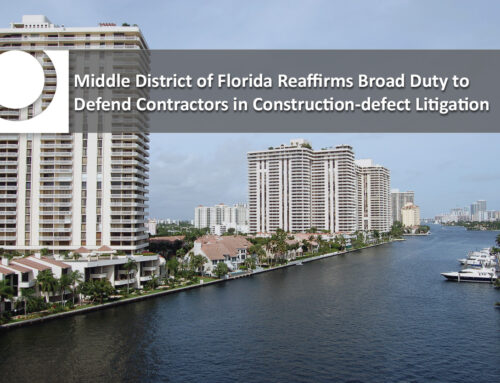A recent broker-malpractice case in Illinois shows how an apparently cozy relationship between a broker and a client can cost both parties dearly. In Brothers Future Holdings, LLC v. Indiana Ins. Co. (Ill. Ct. App. May 1, 2015), the insured asked its broker to buy coverage for a vacant building that the insured hoped, in short order, to at least partially fill with a new business.
Although the evidence about what the broker was told about the building and the owner’s plans for it was in dispute, the broker renewed a property policy with a full exclusion for any property that had been vacant for over 60 days —even though the insured had apparently intimated that the vacancy was not to last long. This bare discrepancy was enough to affirm the jury’s verdict for nearly $2.3 million after the insurer refused to cover damages caused by vandals stripping the building.
Aside from the obvious lesson — never submit an application for insurance with erroneous responses — brokers should read this case for what it portends about broker-client relationships. The opinion describes the broker as “a personal friend” of the insured and recites that the broker had said, “don’t worry, I’ll take care of it” when warned that the optimistic business plans might never take off. In case after case like this, ambiguities about what an insured really asked for seldom survive a jury’s decisions about fault when the insurance “expert” failed to get insurance that, in hindsight, would have covered a loss. Brokers should take great care in avoiding general descriptions like this, even to long-term friends, because it’s always the exception that hales both parties into court after an unexpected multi-million loss sours even years of family picnics and golf games.
Similarly, this case teaches that post-placement comments about coverage shouldn’t be left to boilerplate assurances. After the renewal was placed, the broker represented that it had “performed a substantial review of your policy using a detailed checklist to verify that they accurately meet the coverages which were proposed.” In this case, it’s obvious that the broker failed this standard because the broker knew that property was vacant, and even a cursory review of the policy would have revealed that vacant property wasn’t covered. But every renewal carries this risk for brokers if every endorsement and policy form is not identical. Is the new “total” pollution exclusion, added by endorsement, slightly more comprehensive than the “absolute” pollution exclusion? Did every location described in your client’s email actually make it into the declarations, including the sublimits or options that you really wanted? Brokers, you’d better check. And carefully.
Finally, a word of caution is in order about an issue that didn’t arise in the Brothers Future case, but may well menace brokers and their clients after the placement is in the books. Vacancy exclusions, either total or partial, are common in property policies because underwriters don’t much relish the thought of keeping a risk on their book just waiting for some tweaker needing a few dollars for the copper in the insured’s unguarded, darkened building. Going dark in a building, therefore, may reduce or eliminate coverage without warning to the insured who, like the insured in this case, didn’t read the policy or give it much thought.



